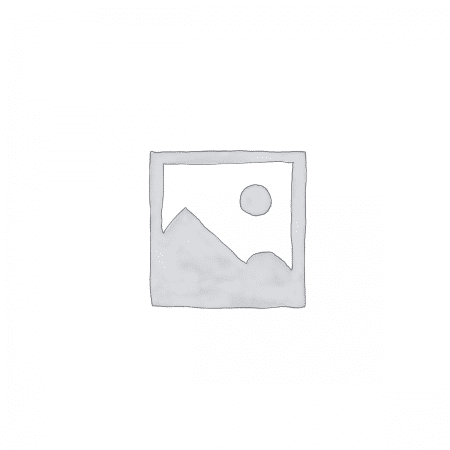Description
Wound care has come into its own in the last five years and is now recognized as a specialty. The field has become so diverse and dynamic that studying “the wound care market” as a whole is no longer instructive. As technologies begin to be commercialized and products hit the market, segmentation by application is the key to understanding market potential.
This Kalorama specialty report will focus on the products that are currently on the market for surgical and trauma wounds. The objective of the report is to present the current state of trauma/surgical wound management and to forecast future revenues and growth rates through 2007 with a base year of 2002 for that indication.
Key market drivers are the level of competition within the market and technological innovations coming to the market. Future competitiveness of companies will depend largely on their ability to develop and market products with a higher therapeutic ratio. Clinical practice and surgeon and ED physician preferences will play a large part of this market, as will the usual concerns about distribution and purchasing channels.
This is the third volume of a series that looks at specific wound areas within the wound care treatment market. The previous two volumes examined the market for Skin Ulcers treatment (Volume I) and the market for Burn treatment (Volume II).
Table of Contents
Chapter One: Executive Summary
- Introduction
- Scope and Methodology
- Size and Growth of the Market
- Trends Affecting the Market
- Competitive Outlook
Chapter Two: Introduction and Overview
- Surgical Wounds
- Trauma Wounds
- Normal Integument
- Epidermis
- Dermis
- Subcutaneous Tissue
- Functions of Skin
- Effects of Aging on the Integumentary System
- Types of Wound Healing
- Defense Against Injury
- Mononuclear Phagocyte System
- Inflammatory Response
- Wound Healing Process
- Primary Intention
- Secondary Intention
- Tertiary Intention
- Delays of Wound Healing
- Complications of Wound Healing
- Hypertrophic Scars and Keloid Formation
- Contracture
- Dehiscence
- Excess Granulation Tissue
- Adhesions
Chapter Three: Characteristics of Surgical Dressings
Chapter Four: Treatments
- Wound Closure
- Sutures
- Stapler and Staples
- Tissue Adhesives, Sealants, and Glues
- Market Segment Conclusion
- Anti-infectives
- Overview
- Market Segment Conclusion
- Surgical and Trauma Wound Management
- Cleansing
- Debridement
- Tapes
- Dry Dressings
- Market Segment Conclusion
- Moist Dressings
- Alginates
- Hydrocolloids
- Hydrogels
- Films
- Foams
- Market Segment Conclusion
- Biological Dressings
- Artificial Skin
- Collagen
- Growth Factors
- Market Segment Conclusion
- Miscellaneous Treatments
- Products and Technologies
- Market Segment Conclusion
Chapter Five: Market Summary and Competitve Analysis
- Market Size and Growth
- Competitive Analysis
- Market Analysis
Chapter Six: Industry Developments
- Product Categorization
- New Products
- Reimbursement
- Novel Treatments
- Xenogenic Matrices
- Amniotic Membrane
- Honey Treatment
- Battle-Ready Bandage Treatment
- In Development
- Scar Treatment
- Surgical Infection
- Demographics, Incidence
- Incidence and Mortality
Chapter Seven: Company Profiles
- 3M Health Care
- Abbott Vascular Devices
- Baxter BioScience
- Bertek Pharmaceuticals, Inc.
- Carrington Laboratories, Inc.
- ConvaTec, Ltd.
- Datascope Corporation
- Ethicon, Inc.
- GlaxoSmithKline Plc
- Healthpoint, Ltd.
- Johnson & Johnson
- Kinetic Concepts, Inc.
- Pfizer, Inc.
- Smith & Nephew, plc
- St. Jude Medical, Inc.
- United States Surgical
Appendix: Company Directory
List of Exhibits
- Table 1-1: World Market for Surgical and Trauma Wound Care Products Revenues by Segment 1997-2007
- Figure 1-1: World Market for Surgical and Trauma Wound Care Products Revenues by Segment 1997-2007
- Table 4-1: Selected Absorbable Sutures by Manufacturers
- Table 4-2: Selected Nonabsorbable Sutures by Manufacturers
- Table 4-3: Selected Staplers and Staples by Manufacturers and Products
- Table 4-4: Selected Tissue Adhesives, Sealants, and Glues by Manufacturer
- Table 4-5: Wound Closure Market Segment Summary 1997-2007
- Table 4-6: Selected Topical Brand Name Anti-infectives
- Table 4-7: Surgical and Trauma Wounds: Topical Anti-infectives Market Segment Summary 1997-2007
- Table 4-8: Toxicity Index for Selected Wound Cleansers
- Table 4-9: Selected Manufacturers and Cleansing Agents
- Table 4-10: Selected Debridement Agents
- Table 4-11: Selected Adhesive Strips and Tapes
- Table 4-12: Selected Dry Dressing Manufacturers and Products
- Table 4-13: Surgical and Trauma Wound Management Market Revenues by Segment 1997-2007
- Table 4-14: Selected Manufacturers and Alginate Products
- Table 4-15: Selected Hydrocolloid Products and Manufacturers
- Table 4-16: Selected Hydrogel Products and Manufacturers
- Table 4-17: Selected Films and Manufacturers
- Table 4-18: Selected Foam Manufacturers, Products and Cost Table 4-19: Surgical and Trauma Moist Dressing Market Revenues by Segment 1997-2007
- Table 4-20: Selected Collagen Products and Manufacturers
- Table 4-21: Surgical and Trauma Biological Dressings Market Revenues by Segment 1997-2007
- Table 4-22: Miscellaneous Surgical Wound and Trauma Treatments Revenues 1997-2007
- Table 5-1: World Market for Surgical and Trauma Wound Care Products Revenues by Segment 1997-2007
- Figure 5-1: World Market for Surgical and Trauma Wound Care Products Revenues by Segment 1997-2007
- Table 5-2: Distribution of Revenues by Segment 1997-2007
- Figure 5-1: Distribution of Revenues by Segment 2002 and 2007
- Table 5-3: Leading Competitors in Surgical and Trauma Wound Care Market by Segments of Participation 2002
- Table 5-4: Revenues and Market Share by Supplier 2002
- Figure 5-3: Market Share by Leading Supplier 2002
- Table 6-1: Global and U.S. Population by Selected Characteristics 1997, 2002, and 2007
- Figure 6-1: U.S. Population by Selected Age, 1997, 2002, and 2007
- Figure 6-2: Global Population by Selected Age, 1997, 2002, and 2007
- Table 6-2: Global and U.S. Yearly Incidence of Surgical and Trauma Wounds by Type



